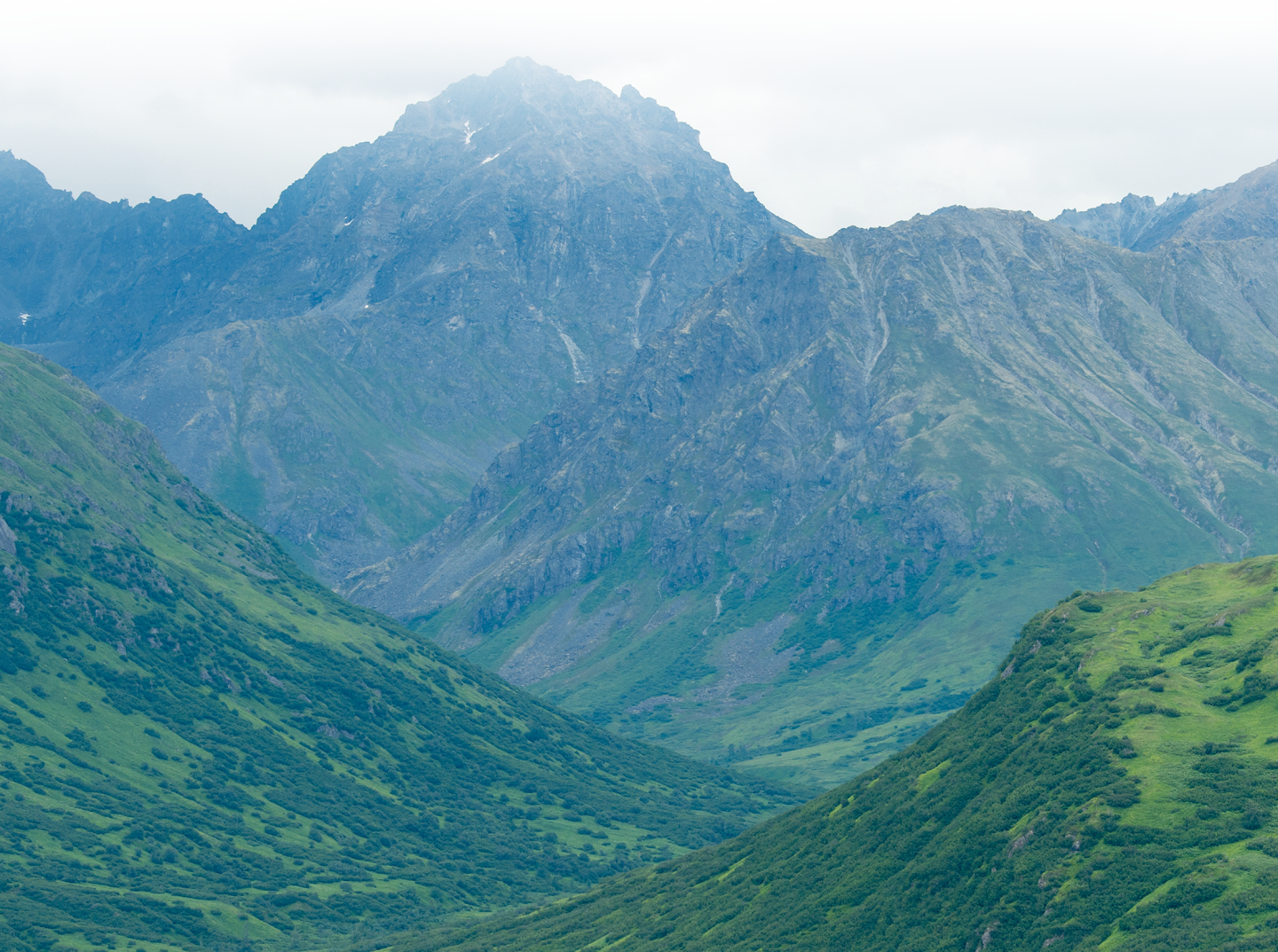Alaska Gold Rush History
In Willow Creek, Alaska, placer gold was first discovered in 1896. Robert Lee Hatcher staked the first hard rock claim in 1906. In the ensuing years, several gold mining operations began.
In 1938, the Alaska Free Gold Mine merged with Independence Mine to form the Alaska-Pacific Consolidated Mining Co. (APC). In 1941, with 83 mining claims, the APC was the largest producer in the mining district. At one point over 200 men were employed and lived near the summit of Hatcher Pass at Independence Mine, opening dozens of tunnels and producing more than 34,000 ounces of gold.
Gold mining came to a halt during World War II. After which, activity declined until the mine finally closed in 1951. The abandoned buildings
and surrounding 271 acres became Independence Mine State Historical Park in 1983. The Mine itself was entered into the National Register of Historic Places in 1974.
Learn about Alaska gold rush history, the mining days and historic buildings on a self-guided interpretive tour through the mine camp. Try your luck panning for gold in the creeks that run from the once large producer of hard-rock gold.
Although first revered for its gold, Hatcher Pass' granite spires, glacial-carved valleys and green tundra are now a prized playground for year-round recreation. Nearby, two lodges offer year-round accommodations and delicious food.
HOW TO GET THERE
Hatcher Pass Road is accessible and well-marked from both the Parks Highway in Wasilla and the Glenn Highway, just north of Palmer.
From Anchorage: Follow the Glenn Highway north from Anchorage north to mile 49.5. Turnoff on Palmer-Fishhook Road and follow the signs to Hatcher Pass Road/Independence Mine State Historical Park.
From Wasilla: Head northeast on Main Street, which becomes Wasilla-Fishhook Road and connects with the Palmer-Fishhook Road.
From Willow: The Willow-Fishhook Road junction is at Parks Highway mile 71.4 from Anchorage and mile 290.6 from Fairbanks.





